
If you thought iFIT workouts were solely meant for strengthening your lower body, think again! Outside of compelling workout series designed to help you build strength and stamina in your legs, iFIT also has many more fitness options that you may not know about. We’re all about body balance, offering engaging workouts geared toward improving both your lower and upper body when done properly and regularly.
What do we mean when we say “upper body?" Which body parts are we including in that umbrella term? In this instance, we’re talking about the muscle groups located in your chest, shoulders, back, and arms. Maybe you’re interested in chest workouts or other upper body workouts that target your biceps and triceps. You may even want to exercise all four of these muscle groups in your weekly workout regimen! With iFIT, your next upper body workout is only a few taps away.
We’re taking a closer look at the main muscle groups in your upper body and pairing each group with a corresponding iFIT workout series to help you get started. With this quick overview, you’ll have a better understanding of how the muscles in your chest, shoulders, back, and arms work. Whether you’re looking for an at-home back, shoulder, arm, or chest workout, read on to find your next upper body workout!
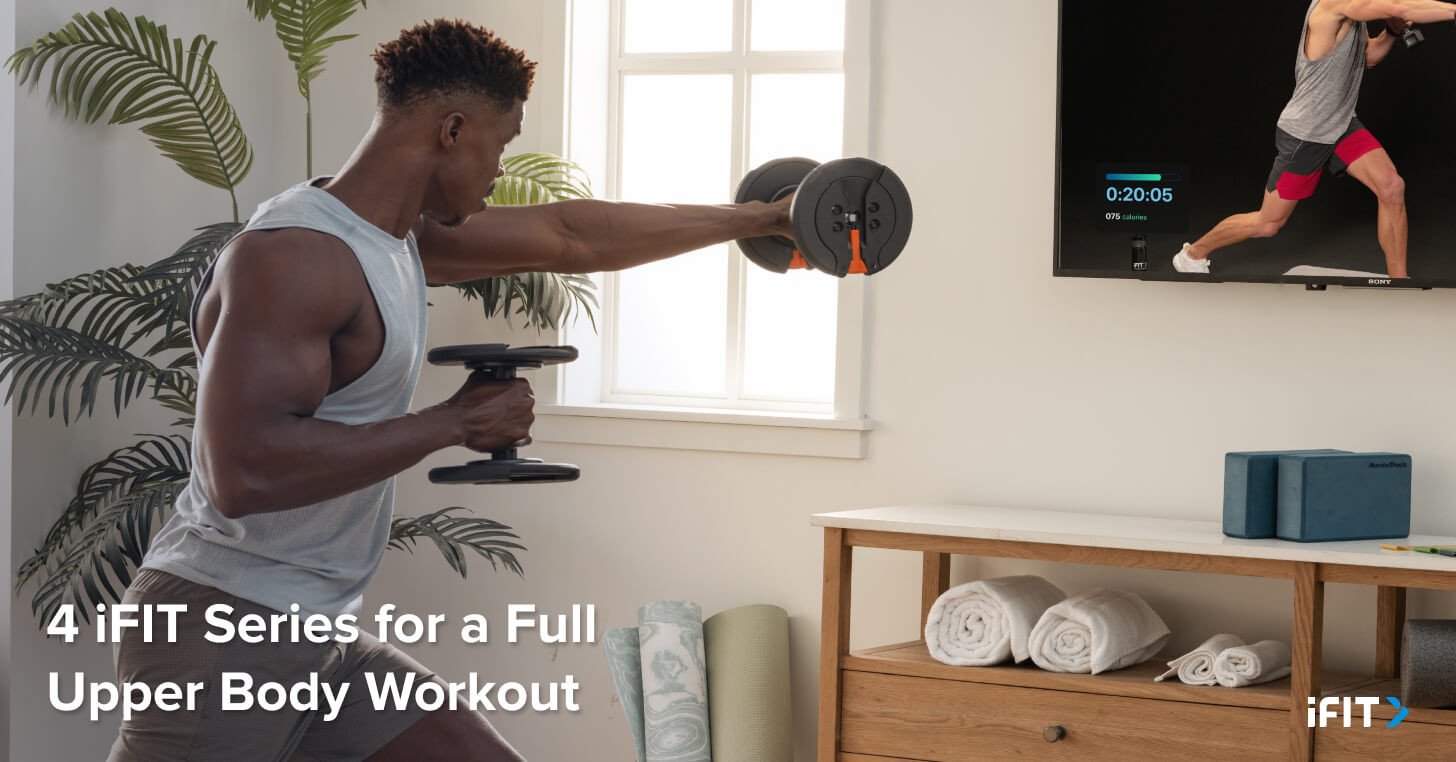
Chest muscles
The chest muscles are responsible for many of our bodily functions, some of which you may not realize. These muscles, including the pectoralis major and minor, help us breathe, move our arms, hold on to heavy objects, and more. There are also a variety of benefits that come from working out your chest1, so let’s get to know the muscles that make up this portion of your upper body.
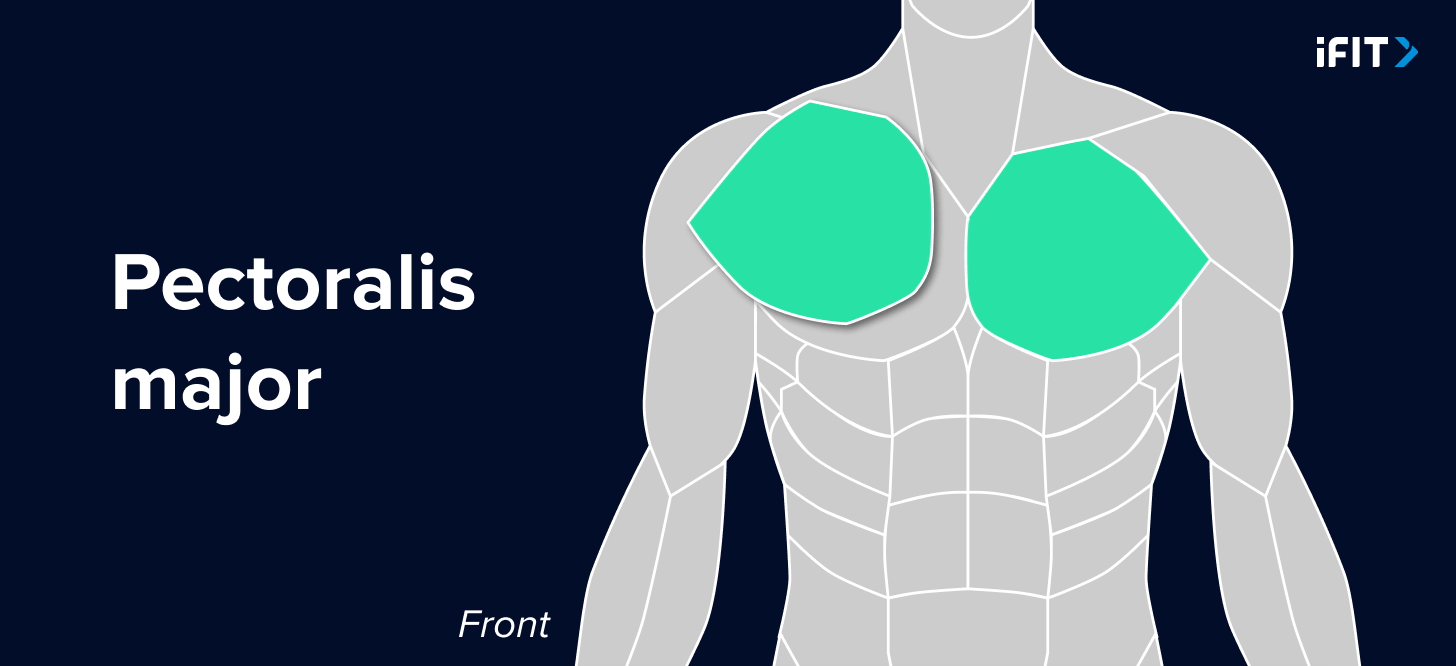
The two pectoralis major muscles (AKA your “pecs”) make up the majority of your chest. These muscles are in charge of pulling your rib cage up during deep inhalation, so your lungs have room to expand. The pectoralis major also helps with arm movement, especially with pushing movements like bench press or push-ups.
Beneath the pectoralis major is a very flat muscle called the pectoralis minor. This chest muscle directly aids your scapula (AKA your shoulder blades), helping with abduction, protraction, depression, upward tilt, and downward rotation. During a chest press exercise, your pectoralis minor helps move your shoulder blades back and forth.
Known as the “boxer’s muscle,” the serratus anterior is responsible for scapular movement, much like the pectoralis minor. It allows for protraction and retraction of the scapula, which is like reaching your arm straight out in front of you and then pulling it back. The serratus anterior also assists with breathing and overhead lifting.
iFIT chest workout
If you’re looking for upper body workouts that target your chest, give an iFIT workout a try! Many of our strength workouts feature curated chest exercises by our team of personal trainers. Consider iFIT Trainer Gideon Akande’s Strength Training 101 Series, which takes you through 15 beginner workouts. In this lower and upper body series, Workout 10 specifically focuses on chest exercises!
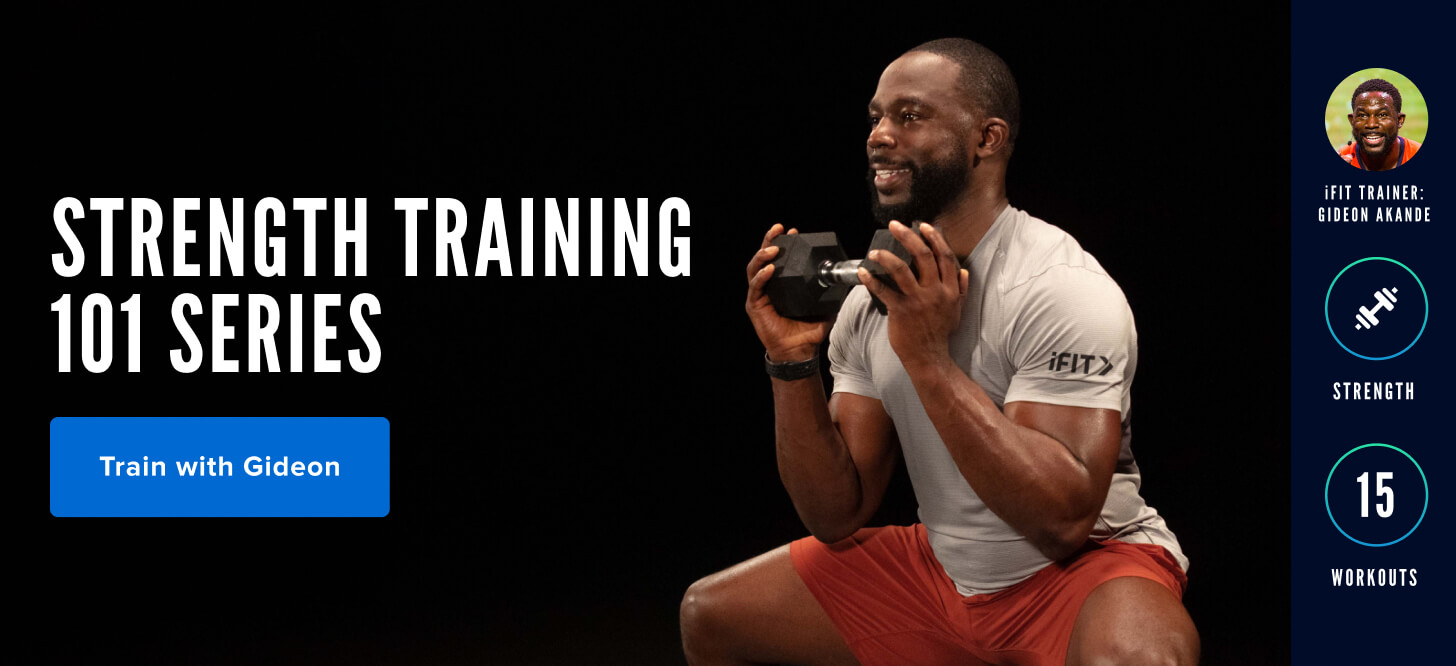
Shoulder muscles
Assisting in virtually all upper body movements, your shoulders help you push, pull, lift, and press down. Your shoulders are naturally integrated into chest, back, and arm exercises.
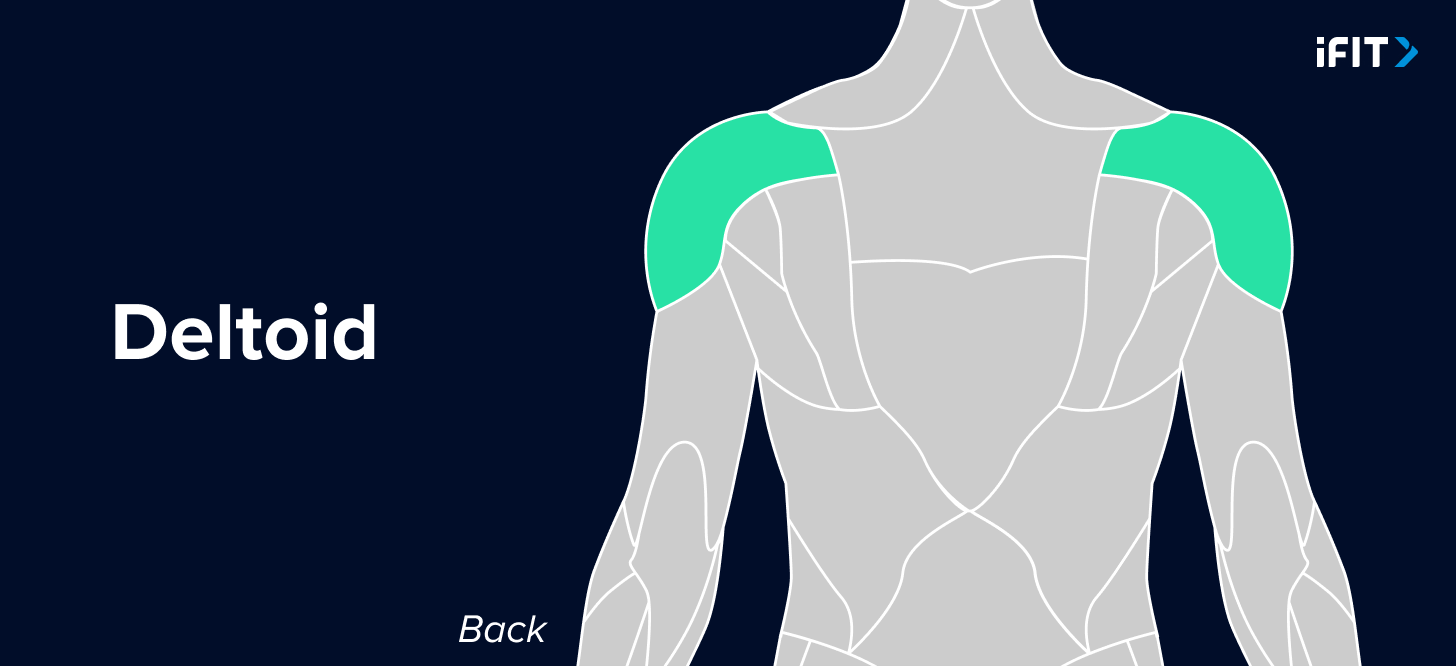
Your deltoid is the largest part of your shoulder, creating the rounded shape atop your triceps and biceps. With three different heads, this muscle keeps joint dislocation at bay, assists in arm rotation, and makes carrying heavy loads easier on the upper body. When you’re holding something away from your body (like several bags of groceries), your deltoids help power these motions and keep the shoulder joints safe.
These four muscles comprise your rotator cuffs, which provide stability to your shoulders. While each of these interior shoulder muscles aid your arms in specific ways, the rotator cuffs themselves allow your arms to rotate, raise, lower, and move away from your body. Think of these muscles as you perform upper body exercises like shoulder presses and lat raises.
iFIT shoulder workout
You can start trying to build strength and muscle in your shoulders with iFIT Trainer John Peel! In his Resistance Band Miniseries, John will coach you through seven challenging workouts that each fall under an hour. While the miniseries is a must-try, Workout 3 may just be the upper body class that you’re looking for! If you enjoy it, find more like it on our fitness app.
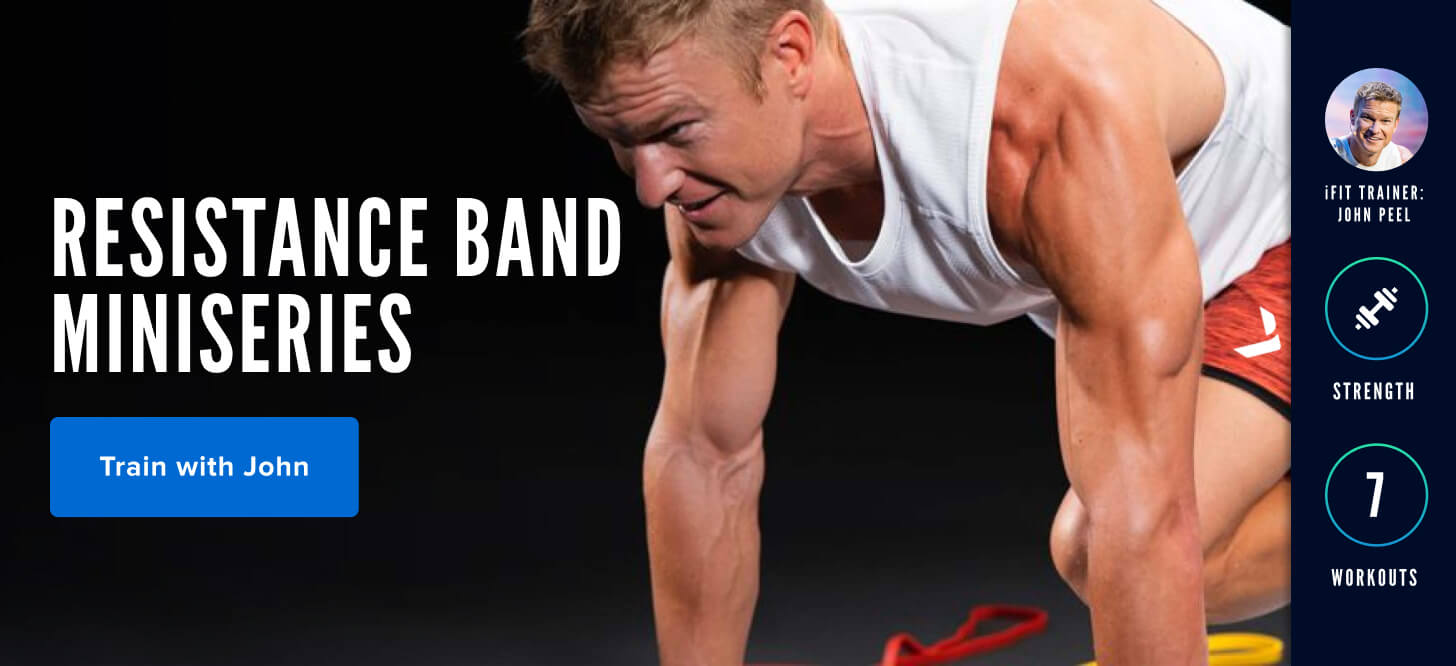
Back muscles
Your back is to thank for your upper body’s ability to move. Your back muscles provide the structural support your spine, neck, head, shoulders, and arms need. Every time you bend down to tie your shoe, twist in your chair to talk to someone, or reach up for a big morning stretch, your back muscles activate. Making up a large portion of your upper body, your back has many muscles that work in sync to help you move!
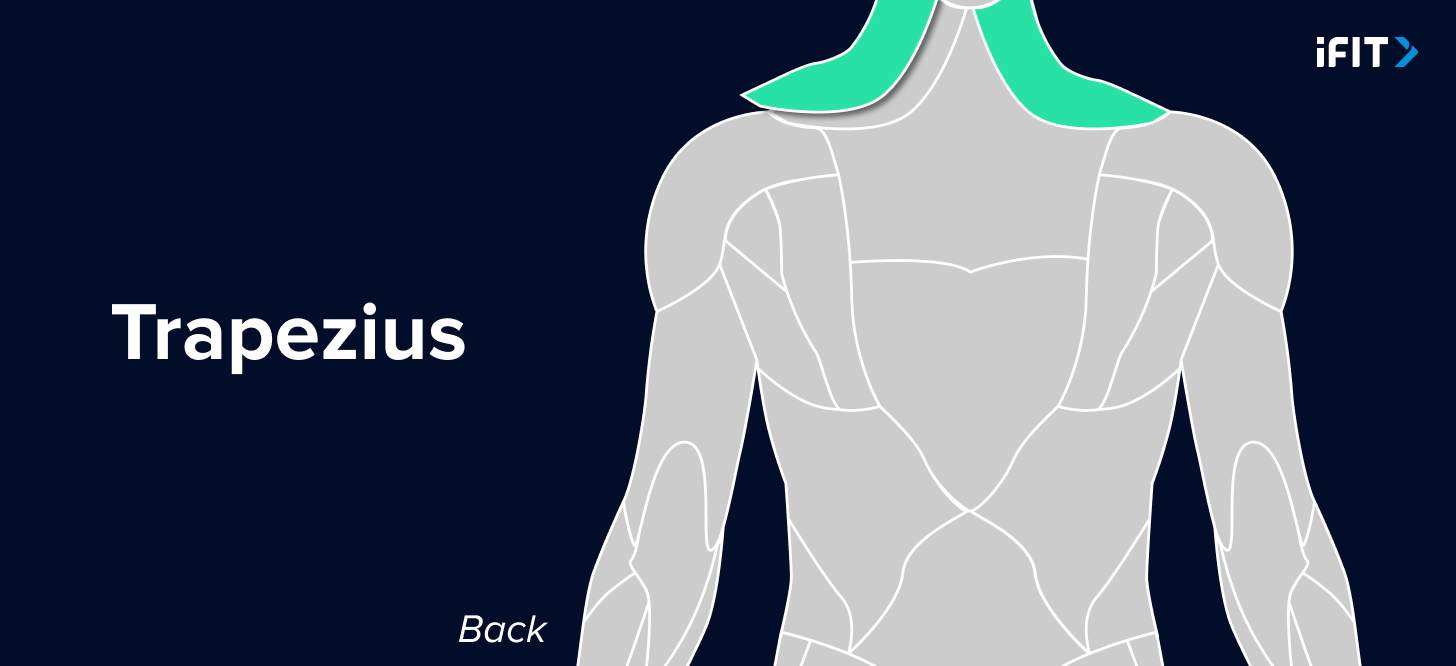
The trapezius, sometimes referred to as the “traps,” is positioned on your upper back behind your shoulders and neck. This muscle helps you move your shoulder blades and neck, as well as remain erect while standing. While performing shoulder shrugs, your trapezius facilitates the up and downward motion of your shoulders.
The levator scapulae is a back muscle that functions to raise your shoulder blades in conjunction with the trapezius. In bouts of neck stiffness, this muscle is usually involved, as it’s positioned at the sides of your neck connecting to the scapulae.
Comprised of the rhomboid major and minor, this muscle group is located in the upper middle section of your back. Rhomboids facilitate scapular retraction and provide stability to your scapulae and shoulder girdles.
As the largest muscle in your back, the latissimus dorsi symmetrically spreads across your spine. Working with the pectoralis major and teres major, this muscle contributes to upper extremity motion. When you raise your arms for a pulldown exercise, your latissimus dorsi stretches to allow for this upper body movement.
iFIT back workout
Try challenging your lats, traps, and other back muscles with the Next-Level Strength Training Series! With iFIT Trainer John Peel, you’ll move through 12 weeks of strength exercises focused on your entire body, including your back. If you’re ready for a challenge, John can bring it over the course of 42 workouts!
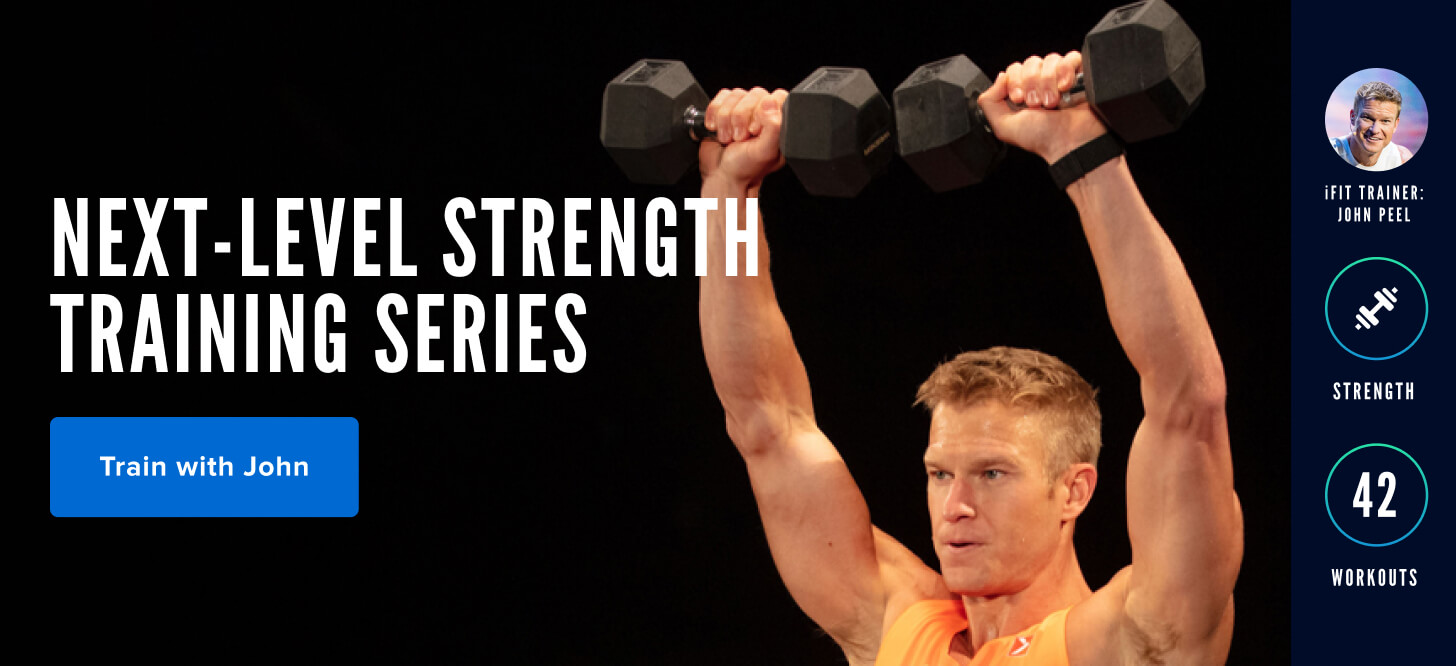
Arm muscles
Arm workouts are a favorite of fitness lovers all over the world. In upper body classes, you will usually encounter some arm exercises. Besides existing as an aesthetic muscle group, your arms make much of your everyday life a reality! Every push, pull, and lifting motion is made possible by the biceps brachii and triceps brachii.
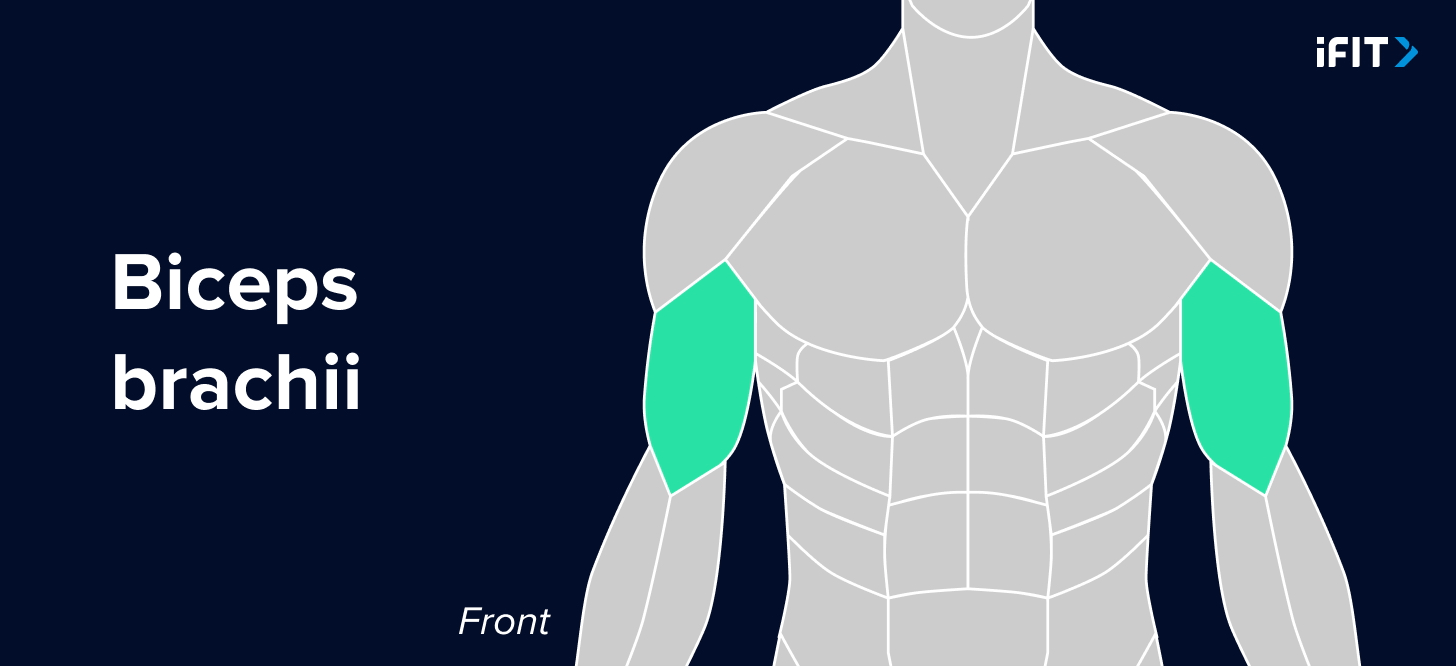
Your biceps, as you may have guessed, are located on the front of your upper arms. These muscles assist in elbow flexion, allowing you to raise your forearms up at the elbows (as with a bicep curl) and turn your palms inwards. When at rest, your biceps naturally overpower the triceps12. This is why your arms appear slightly bent at your sides!
As the antagonist muscle of the biceps brachii, the triceps brachii is situated on the back side of your arms. This muscle allows for extension of the elbow joint, which is what lets you place your arms straight down or out. Your triceps also help stabilize your elbows, which is needed for movements requiring precision.
iFIT arms workout
Ready to make your next home workout one to remember? Work on your biceps and triceps with iFIT Trainer Paulo Barreto in his Functional HIIT Series! Focusing on cardiovascular and muscle endurance, Paulo will guide you through workouts that target specific muscle groups. Many of these HIIT workouts target your arm muscles, so get ready for lower and upper body strength exercises!
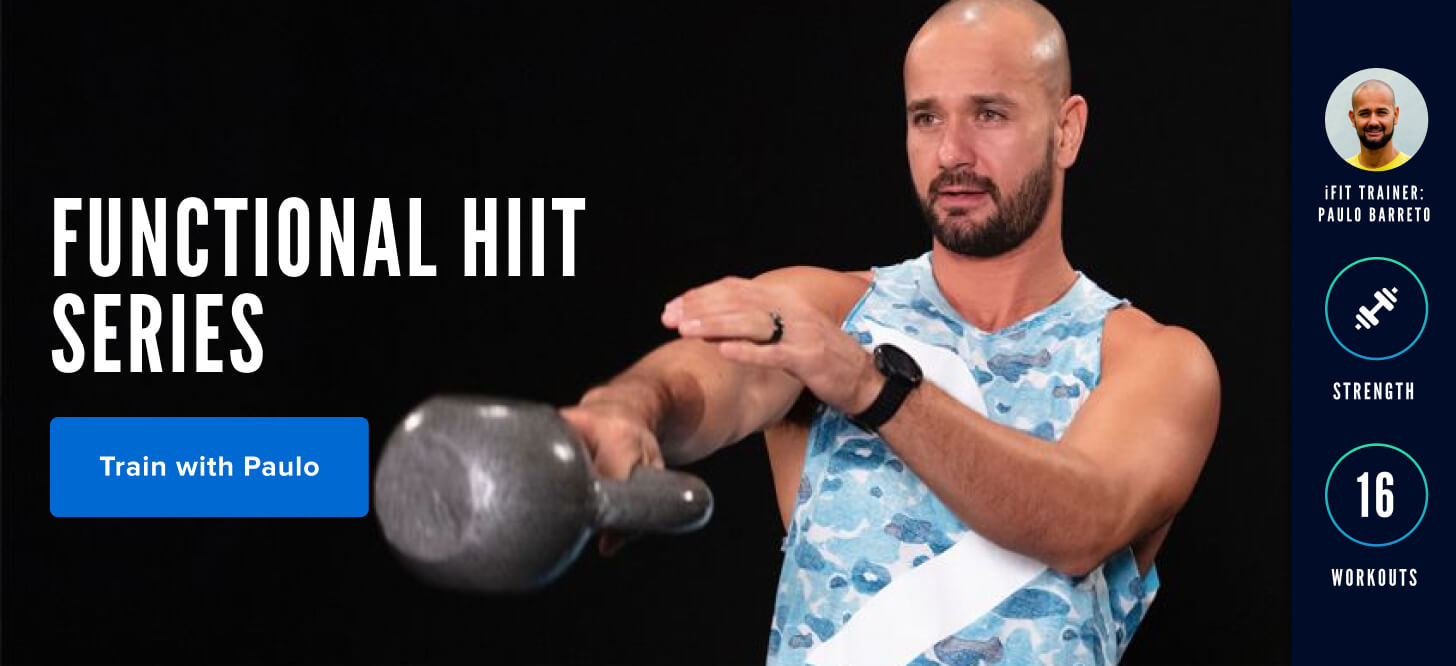
Start an iFIT upper body workout today
Now that you know much more about the major muscle groups that make up your chest, shoulders, back, and arms, you can put that knowledge to use with iFIT upper body workouts. When you sign up for a 30-day free trial of our fitness app, you’ll gain access to a huge selection of strength workouts you can do right from your home gym. Designed for all fitness levels, our workouts, if done properly and regularly, may meet you where you’re at in your fitness journey. Even if you’re a beginner, you can get going with our beginner-level workouts today!
Whether you choose to knock out the previously suggested workouts or find more on your own, you can do them anywhere! Try a chest workout while on your lunch break or an arms workout during your seasonal vacation. Make an iFIT workout a part of your daily schedule or download the fitness app for on-the-go workouts. Upper body exercise is crucial for functional living, helping you continue to do all the things you enjoy. With an iFIT personal trainer leading you through each workout, you’ll feel these upper body muscles working hard!
References
1. Northside Hospital. (2019). 4 unexpected benefits of chest exercises. 4 Unexpected Benefits Of Chest Exercises. https://www.everydaywellness.org/community-health/blog/4-unexpected-benefits-of-chest-exercises.
2. Healthline Editorial Team. (2018, January 24). Pectoralis major. Healthline. https://www.healthline.com/human-body-maps/pectoralis-major-muscle#1.
3. Healthline Editorial Team. (2018, January 19). Pectoralis minor. Healthline. https://www.healthline.com/human-body-maps/pectoralis-minor#1.
4. Lung, K., St Lucia, K., & Lui, F. (2021, October 7). Anatomy, thorax, serratus anterior muscles. NCBI. https://www.ncbi.nlm.nih.gov/books/NBK531457/.
5. Healthline Editorial Team. (2018, January 20). Deltoid. Healthline. https://www.healthline.com/human-body-maps/deltoid-muscle#1.
6. Healthline Editorial Team. (2018, January 23). Shoulder muscles. Healthline.https://www.healthline.com/human-body-maps/shoulder-muscles#1.
7. Ourieff, J., Scheckel, B., & Agarwal, A. (2021, July 26). Anatomy, back, trapezius. NCBI. https://www.ncbi.nlm.nih.gov/books/NBK518994/.
8. Henry, P. J., & Munakomi, S. (2021, August 13). Anatomy, head and neck, levator scapulae muscles. NCBI. https://www.ncbi.nlm.nih.gov/books/NBK553120/.
9. Farrell, C. & Kiel, J. (2021, July 26). Anatomy, back, rhomboid muscles. NCBI. https://www.ncbi.nlm.nih.gov/books/NBK534856/.
10. Jeno, S. H., & Varacallo, M. (2021, August 11). Anatomy, back, latissimus dorsi. NCBI. https://www.ncbi.nlm.nih.gov/books/NBK448120/.
11. Tiwana, S. M., Charlick, M., & Varacallo, M. (2021, August 11). Anatomy, shoulder and upper limb, biceps muscle. NCBI. https://www.ncbi.nlm.nih.gov/books/NBK519538/.
12. Tiwana, S. M., Sinkler, A. M., & Bordoni, B. (2021, August 6). Anatomy, shoulder and upper limb, triceps muscle. NCBI. https://www.ncbi.nlm.nih.gov/books/NBK536996/.
13. Tiwana, S. M., Sinkler, A. M., & Bordoni, B. (2021, August 6). Anatomy, shoulder and upper limb, triceps muscle. NCBI. https://www.ncbi.nlm.nih.gov/books/NBK536996/.
Disclaimer: This blog post is not intended to replace the advice of a medical professional. The above information should not be used to diagnose, treat, or prevent any disease or medical condition. Please consult your doctor before making any changes to your diet, sleep methods, daily activity, or fitness routine. iFIT assumes no responsibility for any personal injury or damage sustained by any recommendations, opinions, or advice given in this article. Always follow the safety precautions included in the owner’s manual of your fitness equipment.
You might also like

New Feature: Connect iFIT to your Favorite Fitness Apps
Whether you’re out running your favorite trail or cycling at home, every single workout is important. We believe tracking your fitness journey in a single location is a key component to chasing your goals. You can now connect your iFIT account with Apple Health™, Garmin® Connect, Google Fit™, and Strava, so all of your workouts are in one place! Note: Only iFIT workouts from the iFIT Library will count toward your iFIT Milestones. Important update 12/31/2025: Google Fit™ is a deprecated service and is no longer supprted by Google. As a result, iFIT no longer supports new Google Fit connections. We’re actively working toward supporting Google Health Connect, Google’s replacement platform, in a future update. Ready to get connected? Here’s how you can connect your favorite fitness apps to iFIT. Apple Health Garmin Connect Google Fit™ Strava How to connect iFIT to Apple Health: Launch the iFIT app on your iPhone.Tap the three lines in the top left corner to access the menu, then tap on Settings.From Settings, navigate to Connected Apps.On the Connected Apps screen, select Apple Health, then tap Connect.You'll be taken to the Health Access page where you can enable sharing data from iFIT to Health. You can control which types of information iFIT will read and write to Health. How to connect your iFIT and Garmin Connect accounts: Launch the iFIT app on your iPhone or Android phone. Tap the three lines in the top left corner to access the menu, then tap on Settings.From Settings, navigate to Connected Apps.On the Connected Apps screen, select Garmin Connect, then tap Connect.Sign in to your Garmin Connect account.After signing in to your Garmin Connect account, toggle on the preference to share activity data from Garmin Connect to iFIT.Tap the Agree button to connect your iFIT and Garmin Connect accounts.After connecting, you can set your desired preferences to automatically sync your Garmin Connect activities to your iFIT account. Important update 12/31/2025: Google Fit™ is a deprecated service and is no longer supprted by Google. As a result, iFIT no longer supports new Google Fit connections. We’re actively woring toward supporting Google Health Connect, Google’s replacement platform, in a future update.How to connect iFIT to Google Fit™: Launch the iFIT app on your iPhone or Android phone.Tap the three lines in the top left corner to access the menu, then tap on Settings.From Settings, navigate to Connected Apps.On the Connected Apps screen, select Google Fit™, then tap Connect.You’ll be prompted to select the Google account you would like to connect. Tap the Allow button to allow iFIT access to your Google Fit™ account.After connecting, you can set your desired preferences to automatically sync activities between iFIT and Google Fit™. How to connect your iFIT and Strava accounts: Launch the iFIT app on your iPhone or Android phone. Tap the three lines in the top left corner to access the menu, then tap on Settings.From Settings, navigate to Connected Apps.On the Connected Apps screen, select Strava, then tap Connect.Sign in to your Strava account.After signing in to your Strava account, tap the Authorize button to connect your iFIT and Strava accounts.After connecting, you can set your desired preferences to automatically sync your activities between your iFIT and Strava accounts. We hope you enjoy this new feature as you chase your fitness goals with iFIT! Google Fit™ is a trademark of Google LLC. Disclaimer: This blog post is not intended to replace the advice of a medical professional. The above information should not be used to diagnose, treat, or prevent any disease or medical condition. Please consult your doctor before making any changes to your diet, sleep methods, daily activity, or fitness routine. iFIT assumes no responsibility for any personal injury or damage sustained by any recommendations, opinions, or advice given in this article. Always follow the safety precautions included in the owner’s manual of your fitness equipment.
September 2, 2021

How to Stay on Track with Your Workouts
Congratulations! If you find yourself reading this, then you have successfully completed the first step toward a healthier and more dynamic you. As you embark on a new journey to a healthier lifestyle, it's important to realize that you not only need to, but want to make a change. Keep in mind that staying on track with your workouts is as much a physical challenge as it is a mental challenge. Now, ask yourself, are you committed? Remember, mind over matter—your goals are never out of reach. Check out these tips from our iFit trainers to help you stay on track with your workout routine. Gideon Akande The time of year for reflection and rededication is upon us, and personal fitness is at the forefront in the minds of most. Whether this is your first rodeo or you’re an experienced athlete, here are my 5 top tips to improve your exercise excellence. Start somewhere. It doesn’t matter what you do, just MOVE! You can fine-tune the process at a later time, so start with the most convenient forms of exercise for you. Take it easy. Rome wasn’t built in a day; neither was your body. There is no need to feel like you must complete your goals in the first week. Build slowly and gradually to remain safe and feel accomplished. Switch gears. Fitness is a very personal journey. It is not necessary to only follow one discipline to see results. Therefore, try it all! You’ll be surprised at what your body best responds to, but, more importantly, what you may enjoy. Posse up. Studies show that success rates improve dramatically when you surround yourself with others that share similar goals. Join forces with family, friends, and coworkers to develop accountability that will push you further, longer. Rest for your best. Recovery is essential for you to feel and perform better. Stretch, massage, and sleep are great ways to increase energy, boost metabolism, and fuel your next sweat session. You can train with Gideon on any iFit-enabled equipment all around the world and in the studio! Follow Gideon on Instagram @getfitwithfgiddy Follow iFit on Instagram @ifit Breeanna Cox Here are my tried-and-true tips for staying on track! Set realistic goals. Break up your activity into small tasks each and every day, so it's not so intimidating. Try incorporating 30 squats 3 times a day into your routine, and then build up from there. Hold yourself accountable. Tell friends, family, or your spouse what your goals are, so you've officially put your goal out to the world. This will help ensure that you follow through with your fitness plans. Love your workouts. Don't follow fitness fads or trends—do what you find enjoyable, so that you look forward to your workouts instead of dread them. Have a clear purpose. Identify what it is that's driving you to stick to your goal. Why do you want to be more fit? Once you figure out your motivation, write it down and post it everywhere you can see it! You can train with Breeanna on any iFit-enabled treadmill and elliptical! Follow Breanna on Instagram @bodybybree2 Follow iFit on Instagram @ifit Elyse Miller We all get a little off track from time to time. The best way to stay on track is to make fitness a top priority. Schedule your workouts. Plan your workouts as if it’s an appointment with someone else. You wouldn’t want to cancel out on a hair or doctor appointment, so don’t ditch out on yourself. Set a time and follow through. Prep your gear. I lay my workout clothes out at night, so I see them waiting for me first thing in the morning. Having that reminder staring at you in the face as soon as you wake up makes it harder to skip out on your workout. Early bird gets the worm. I’ve found that early workouts are great for those with busy schedules. Rather than putting it at the end of the day, when a million other things can get in the way, I recommend waking up 30–60 minutes early to get your sweat on. Keep it at home. Having workout equipment at home is a major game changer, too! Taking out the commute and hassle of a gym saves so much time and eliminates excuses. Make it a lifestyle. Exercising your body should be as routine as brushing your teeth. Make it a non-negotiable. Even on your “off days,” it’s good to schedule in some body work time—stretching, foam rolling, or planning for the next workout. You can train with Elyse in Bora Bora and in studio classes on any iFit-enabled treadmill! Follow Elyse on Instagram @fitelyse Follow iFit on Instagram @ifit John Peel Sign up for a program. If you are just beginning your fitness journey or looking for a routine to get you back in the game, the iFit Alps Incline Series is the perfect program! This 6-week plan will ease you into a structured workout regimen and also give you the push and climb you need to hit some challenging progressions. Not only will you sweat, but you will experience the most beautiful location I think we've filmed at to date. The Alps are breathtaking. They are even more breathtaking when you witness them from the summit, after crushing a workout! Hydrate, hydrate, hydrate. Dehydration can lead to a lack of energy and increased heart rate—both will make your workouts much more challenging. I like to drink two cups of water as soon as I wake up. It's an easy change to make to your morning routine, but it makes a big impact. #100aDay. Since having back surgery, I've set a personal goal of doing 100 ab rollouts each day. A strong core means more stability, improved performance, better posture, and also leaves you less susceptible to fitness-related injuries. Set a goal that doesn't take too much time out of your day. That way, you'll have no excuses not complete it! You can train with John on any iFit-enabled equipment, all around the world and in the studio! Follow John on Instagram @johnpeelefitness Follow iFit on Instagram @ifit The first step to fitness success is believing you can do it. Staying on track is the hard part, but with small changes in your mindset and daily routines, you can make a lasting impact in the long run. You only have one body, so make sure you nurture it and give it the attention it deserves! Here's to a happier, healthier, and more dynamic you. You deserve it.
January 9, 2019

NEW ROUTES : EVEREST
Add another check to your bucket list without spending a dime. Khumbu Region Google just released the first-ever Street View images for Mount Everest, located in the Mahalangur section of the Himalayas on the border of Tibet. And while you may not be able to climb to the summit of this amazing peak, you can explore the Khumbu region of Nepal in the mountain’s shadow and Mount Everest's base camp. The Program Our Mount Everest workout program will push you past your limits. If you’re ready to take on a new challenge, then get ready to hike over 71 miles and climb more than 19,000 vertical feet in just 20 workouts. This grueling program is not for the faint of heart, because you will be required to ask more from yourself. But let me tell you, the views are absolutely worth the work. And just remember, when the going gets tough, at least you aren’t carrying a pack on your back. To join us, add the program on iFit, jump on your iFit-enabled equipment and enjoy the workout as your machine will show Google Street View ™ all along the way, while automatically adjusting the incline/decline to match the outdoor terrain. Yak Parking Lot in Namche Bazaar, Nepal Descent from South Base Camp Everest South Base Camp Everest Base Camp - Climber's Memorial Your Journey Through the misty air and lush terrain, you’ll start your journey at the Tenzing-Hillary Airport, located in Lukia, Nepal. And with the program being all trail, you’ll wander through small towns, seeing a way of life completely different from your own. As you follow other fellow backpackers, don’t be surprised to pass some pack mules along the way that you’ll wish were carrying you. Continuing on your journey, you’ll trek through multiple cities as you head towards the mountain. From Phakding to Benkar, Khumjung to Panboche, and all the way to Thame, you’ll wind past monasteries, lodges, and schools, gaining an appreciation for the lifestyle in this beautiful region. You’ll see more than just the drizzling weather you begin in, as sunshine and desert-like landscapes cover much of the landscape with snow-capped mountains in view. Your expedition ends in Gorak Shep, a frozen lake bed covered with sand in Nepal. Now all that’s left to do is join the program, stretch your legs, and get ready for inclines and views that will take your breath away! iFit Trainer Emily Wiley Suggested Workout MOUNT EVEREST Climb over 19 thousand feet to Everest Base Camp. WARNING: This post is not intended to replace the advice of a medical professional. The above information should not be used to diagnose, treat, or prevent any disease or medical condition. Please consult your doctor before making any changes to your diet, sleep methods, daily activity, or fitness routine. iFit assumes no responsibility for any personal injury or damage sustained by any recommendations, opinions, or advice given in this article.
April 2, 2015